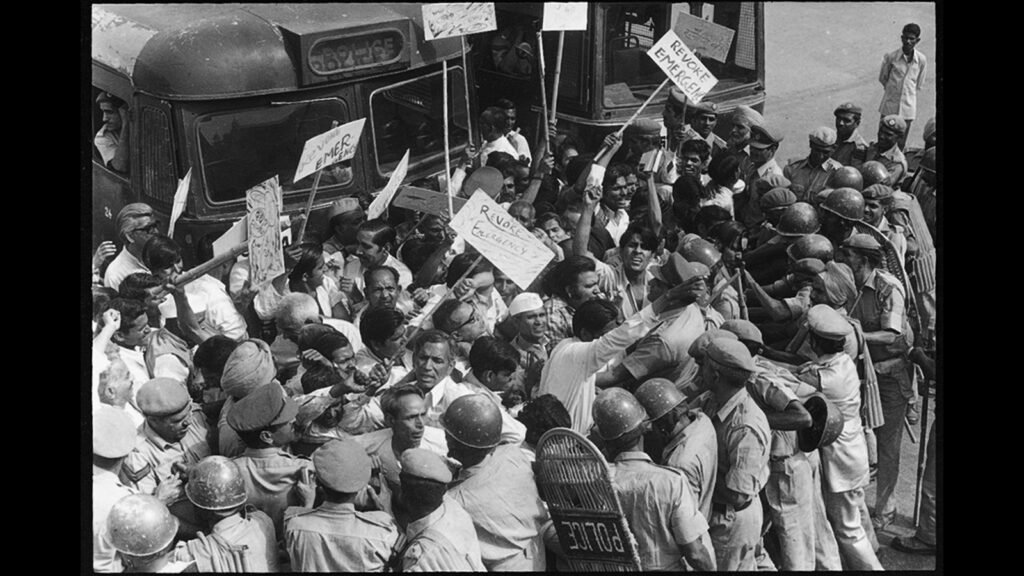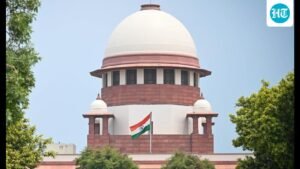
There is a misconception that judicial activism in India emerged after the withdrawal of the National Emergency (1975-1977). In the true sense of the phrase, it was inaurated in the Golaknath Case (1967) When the Supreme Court hand that Parliament cannot curtail the fundamental rights of the people as enumerated under part 3 of the constitution. The court, in GolaknathDemarcated the limits of legislative majority. This was, perhaps, the first direct judicial effort to distrust the constitutional democracy from conventional democracy where legislative Majority Alone Matters. Golaknath was a constitutional assertion over political whims and fancies, which, indirectly, Negated Idolatry in Politics.

Then came the seminal judgment in Kesavanada Bharati (1973) That evolved the basic structure doctrine. It said that parliament cannot alter the basic structure of the constitution by invoking the legislative process. Many ideas like secularism, republicanism, free and Fair election and Rule of Law Were, Thereafter, Indicated as Basic Features of the Constitution by Way of Various Judicial Pronouncements. The doctrine reesmbled the eternity clause in the German constitution on the intimate of the constitutional tans. It tired to stall the legislative onslaught instigated by Personal or Political Interests.
It was the thin majority that evolved the Kesavananda Bharati Principle (the doctrine of basic structure) The challenge the judgment posd against an agangizing executive and parloamentary majoritarianism prompt the executive to meddle with the affairs of the judiciary. Three Judges – Justices JM Sheelat, Ks Hegde and An Grover – Who Decided Against The Regime Under MRS Gandhi Had to Resign When the Bench, Justice An Ray, WHO RULED In So Rules in Subport of the regim Elevated as the Country’s Chief Justice.
Thus, the seeds of political and judicial turmoil during the emergency was Sown MUCH Prior to Its Formal Declaration. The fissure between the executive and judiciary was essentially a case of the most Danger Branch of the Government Crushing “The Least Dangerous Branch”, As Alexander Hamulton Famulton Famously Descriryory. During the emergency, a commission judiciary came into getting and the judges often chose an approach opposite to what the majority in Kesavananda Bharati Outlined.
The independence of the judiciary beCame a myth and what Jag Griffith explained in The politics of the judiciary (1977) Was Proved Right. According to Griffith, when Judges are confronted with Direct Political Situations, “They Act in Broadly Similar Ways” and “Behind these Actions LIES ANIFYINS ANIFYING ATTITUDEE of MINDE, APOSITICAL POTITUDE Which is primarily concerned to protect and conserve certain values and institutions ”. When the judges (Except justice hr khanna) declared that Fundamental Rights Cold Be Suspended during The National Emergency, The “Political Position” of the Court Expected ITSELF, White Practical Annihilated the Constitution during the days days. Again, the court, while setting aside the allahabad high court verdict that disquested Prime Minister Indira Gandhi’s Membership of the Lok Sabha, Validated The Retroperative Amendments to the Elecom Laws. The amendment Absolved Her From The Consequences of “Corrupt Practices” as found against her by the allahabad high court.
Constitutions Across the World are only an effort to reduce, if not to end, the evils of state power. The constitutional text, on its not be removed, this function in the absence of a political climate that ensures the working of the constitution. Indian Politics has been not only failed the people but also the constitution. Liberal Thinker Murray Rothbard in Anatomy of the state (1974) Lamented that “of all the numerous forms that governments have taken over the centuries, of all the concepts and institutions that have been tried, none have been successed in cheekkkk
The Contemporary Judicial Reality Across the World is more dispiriting. In a 2020 paper titled Abusive Judicial Review: Courts Against DemocracyDavid Landau and Rosalind Dixson Wrote: “In some cases, courts have upheld and thus legitimate regime actions that were helped actors consolidate power, undermine the oppostion, and trick the elactoral Palaying field heavily in their favor. ” They also found that “Clever Authoritarians often do their manipulation well before elections have actually been help, by consolidating power, stacking key institutions such as coup Harassing opposition parties and leaders ”. Countries like russia, brazil, poland, hungary, ecuador, philippines, venezuela have demonstrated that Populist Autocracies can Weaken The COURTS. Bad political ambience can only create an equally bad court system, despite our expectations to the contrary.
Thought there was many unconventional judgments in social action literses after the emergency, where the supreme court as an institution triad to regain its glori that was lost touches, their hardly Challenged the Functional Edifice of the Executive or Legislature. They also not have done so. As such, India, like any other democracy, should guard against the fragility of its Judiciary.
Such Vigilance Might Yield Better Results Sometimes, As illustrated by the postscript to Kesavananda Bharati Case. In October 1975, The then Chief Justice of India an Ray Constrated A 13-Member Bench for Considering a review of the Kesavananda Bharati Judgment. It was done without any reference by any Bench and was based only on the directs of the cji. Lawyer Nani Palkhivala Objected to these Aberrations and Argued Against revisiting the Radical Judgment. Justice Murtaza Fazl Ali Asked Palkhivala If the Kesavananda Bharati Judgment was against palkhivala’s clients would he have asked for a review. Palkhivala’s reply was that Had it been the case, there would be no supreme court by then where he could have come! Ultimately, the bench was disasked and the judgment retained.
The history of the emergency Years Offer Significant Lessons for the Country’s Democracy. The most important one being that the constitution survives only when its institutions remain vigilant, and not with with rheteric.
Kaleeswaram raj is a lawer at the supreme court of India. The views expressed are personal.




